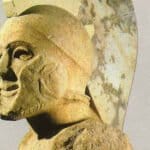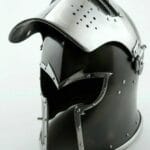This guide explores the fascinating world of cataphracts, the heavily armored cavalry that dominated ancient and medieval battlefields. From their origins to their lasting legacy, we’ll uncover the secrets of these formidable warriors.
Decoding the Cataphract: An Overview
Imagine a knight in shining armor, but even more impressive. Picture full body armor, not just for the rider, but for the horse too! That, in essence, is a cataphract—the tank of the ancient world. [https://www.lolaapp.com/cataphracts] These elite warriors, encased in metal from head to hoof, represented a new level of military might. Their presence dominated battlefields for centuries, inspiring awe and terror in equal measure.
What is a Cataphract? Definition and Etymology
The word “cataphract” comes from the Greek kataphraktos (κατάφρακτος), meaning “fully armored” or “enclosed on all sides.” It’s formed from kata (κατά, meaning “down,” “completely,” or “against”) and phraktos (φρακτός, meaning “protected” or “covered”). This etymology perfectly captures the essence of these heavily protected warriors. [https://www.lolaapp.com/cataphracts]
The Rise of the Iron Horsemen: Origins and Spread
Cataphracts originated in ancient Persia (modern-day Iran) among nomadic horse cultures. [https://www.lolaapp.com/cataphracts] From there, the concept of heavily armored cavalry spread across Eurasia and North Africa, influencing armies for centuries. The Seleucid Empire, Parthians, Sassanians, Romans, Byzantines, and others all adopted and adapted cataphracts, demonstrating the widespread appeal of this powerful military concept.
Cultural Adaptations and Evolution
While the core concept of fully armored cavalry remained consistent, the specifics of armor design and weaponry varied across cultures and time periods. Some cataphracts wore scale armor, with small metal plates overlapping like fish scales. Others used lamellar armor, composed of small plates laced together. And yet others wore mail armor, made of interlinked metal rings. Horse armor also differed in design and extent. Exploring these cultural variations offers a fascinating glimpse into the evolution of warfare.
Dressed to Impress (and Destroy): Armor and Weaponry
Cataphracts were far more than just men in armor on horses; they were unified fighting machines. Both horse and rider were heavily armored, creating a formidable and intimidating presence on the battlefield. Their primary weapon was the kontos—a long, heavy lance designed to deliver a devastating blow. Beyond the kontos, they often carried swords and maces for close-quarters combat, and sometimes even bows or lead-weighted darts called Martiobarbuli for ranged attacks. [https://www.lolaapp.com/cataphracts]
Shock and Awe: Cataphract Tactics and Effectiveness
Cataphracts were the hammer blow of ancient armies, masters of shock and awe tactics. [https://www.lolaapp.com/cataphracts] They thundered into enemy formations, shattering their ranks and creating chaos. Their heavy armor and momentum made them particularly effective against heavily armored infantry and even other cavalry. However, their effectiveness was not absolute. Factors like terrain, supporting troops, and enemy tactics played a crucial role in determining their success. They thrived on open, flat ground but struggled in uneven or obstructed terrain. Their reliance on combined arms tactics further emphasizes that they were most effective as part of a larger, coordinated force.
Strengths and Weaknesses on the Battlefield
The sheer visual impact and momentum of a cataphract charge likely had a significant psychological effect on opponents, sometimes routing them before direct contact. However, the weight of the armor limited their stamina and maneuverability. Exhaustion and overheating, for both horse and rider, were significant issues. They were also vulnerable to flanking maneuvers and concentrated missile fire, particularly if aimed at weaker points in their armor.
A Lasting Legacy: Influence on Warfare
The influence of cataphracts extended far beyond their own time. They may have faded from the battlefield, but their legacy lived on, particularly in the medieval knight. The similarities are striking—the heavy armor, the role as elite shock cavalry, the focus on mounted combat. Some historians even suggest that the cataphract served as a prototype for the knight. Variations of heavily armored cavalry continued to appear in different cultures throughout history, a testament to the enduring appeal of this powerful military concept. Do you want to know about the history of the Alesian? You can explore the Alesian history by clicking on the link.
Unanswered Questions and Ongoing Research
While we know a great deal about cataphracts, much remains to be discovered. Ongoing research explores questions like the economic implications of fielding such an expensive force, comparisons with other heavy cavalry units like the Byzantine clibanarii, and the reasons for their eventual decline as a dominant military force. Another appealing medieval headgear is a Barbute helmet. This is a type of helmet with a visor head protection and cheek pieces. Its primary purpose is to shield the face and neck. Interested? Click on the barbute helmet for more information about it. Researchers also continue to investigate the specific ways different cultures adapted cataphracts to their unique needs and resources, adding further depth and nuance to our understanding of these fascinating warriors. [https://www.lolaapp.com/cataphracts]
Did Romans Use Cataphracts?
The Roman army, known for its adaptability, also incorporated cataphracts into its legions after encountering them in the East. [https://www.lolaapp.com/cataphracts] Evidence from Roman writers like Arrian, Aelian, and Asclepiodotus, who used the term “cataphract,” supports this. The extent of their use and their specific role within the Roman military are still being explored. How Roman cataphracts differed from their Eastern counterparts and how they were deployed in various campaigns are questions that continue to intrigue historians. It’s probable their use varied over time and geography, influenced by specific military needs and encounters with Eastern empires like the Parthians and Sassanians, whose cataphracts played a significant role in conflicts with Rome. The Battle of Carrhae, where Parthian cataphracts were instrumental in defeating the Romans, likely spurred Roman interest in adopting this type of cavalry.
- Discover Long Black Pepper: Flavor & Health Benefits - April 25, 2025
- Shocking Twists: The Grownup Review: Unreliable Narration - April 25, 2025
- A Quiet Place Book vs Movie: A Deep Dive - April 25, 2025
















